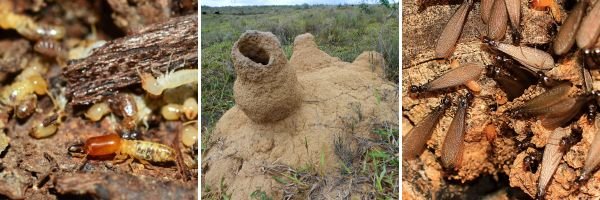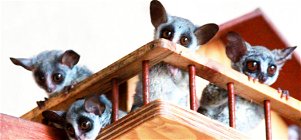Explore why African waterholes come alive at dawn and dusk. Learn about animal behaviour, best viewing times, and how to enjoy waterhole safaris around Marloth Park and Needles Lodge.
The Secret Giants of Kruger: Unveiling the Marvels of Insect Life

Kruger National Park's ecosystem is sustained by key insects: African Honey Bees vital for pollination, Dung Beetles enriching soil, Mopane Worms as food sources, Army Ants controlling insect populations, and Termites as crucial decomposers. These species are essential for the park's ecological balance and biodiversity.
In the shadows of the well-trodden paths of Kruger National Park, a tiny world teems with life, playing a colossal role in the park's ecological story. Below is an introduction to five fascinating insect species, each a marvel in its own right, contributing uniquely to the rich tapestry of Kruger’s ecosystem. Let's embark on a fascinating journey into the world of five key insect species, exploring their crucial roles and uncovering three weird and interesting facts about each.
1. The African Honey Bee (Apis mellifera scutellata)
This bee is a small yet mighty force in Kruger. Known for their distinctive buzzing and pivotal role in pollination, these bees are the keepers of ecological balance, ensuring the survival and proliferation of numerous plant species across the park.
Role in Kruger: These bees are essential pollinators, aiding the reproduction of numerous plant species. Their pollination is crucial for the park's flora, supporting diverse wildlife.
Interesting Facts:
- Navigational Wonders: African Honey Bees can navigate using the sun, memorising landmarks to find the most efficient routes to food sources.
- Dancing Communicators: They perform a 'waggle dance' to communicate the location of food sources to their hive mates.
- Thermoregulation Experts: These bees can regulate the hive's temperature, clustering to generate heat or fanning their wings to cool it down.

2. Dung Beetle (Scarabaeinae)
Dung beetles, with their iconic ball-rolling behaviour, are vital recyclers in Kruger's landscape. These robust and industrious insects are integral to nutrient cycling, turning waste into wealth and contributing to the health of both the soil and the park's large mammal populations.
Role in Kruger: They recycle animal waste, enriching the soil and controlling parasites and flies, thus contributing to the health of the park’s mammals.
Interesting Facts:
- Strongest Insect: Some species of dung beetles can pull objects over 1,000 times their body weight.
- Celestial Navigation: They use the Milky Way as a navigation tool, the only known non-human species to do so.
- Home Builders: Dung beetles create underground nurseries for their young, using dung balls.

3. Mopane Worm (Gonimbrasia belina)
The Mopane Worm, the larval stage of the Emperor Moth, is a remarkable example of nature’s adaptability. This caterpillar is a crucial component of the Kruger ecosystem, primarily feeding on the leaves of Mopane trees. It serves as a key food source for various birds and mammals and is also a valuable nutritional resource for local human communities.
Role in Kruger: These caterpillars control the growth of Mopane trees and provide a vital protein source for various animals and humans.
Interesting Facts:
- Economic Importance: The Mopane Worm is a valuable food source and forms a significant part of the local economy.
- Nutritional Powerhouse: Rich in protein, minerals, and vitamins, they are more nutritious than beef.
- Colourful Communicators: Their bright colours serve as a warning to predators about their potential toxicity.

4. Army Ants (Dorylus spp.)
Army ants are vital ecological agents in Kruger. Their predatory behavior controls populations of other insects, maintaining a natural balance. As they move in large groups, they also contribute to soil aeration and turnover, essential for plant growth and health. These ants represent the dynamic, interconnected nature of Kruger's ecosystems, where each species plays a specific, vital role.
Role in Kruger: Their predatory behaviour helps control insect populations, and their movement aids in soil health and plant growth.
Interesting Facts:
- Lethal Predators: Capable of overpowering much larger prey, including reptiles and small mammals.
- Nomadic Lifestyle: Army ants don't build permanent nests but create temporary 'bivouacs' using their bodies.
- Coordinated Hunting: They use pheromones to communicate and coordinate their attacks in a highly organised manner.

5. Termite (Isoptera)
Termites are critical decomposers and ecosystem engineers in Kruger. Their mounds provide habitats for various species and contribute to the soil's health through aeration and nutrient recycling. By breaking down dead plant material, they enrich the soil, supporting robust plant growth, which in turn sustains a wide range of wildlife.
Role in Kruger: Termites decompose dead plant material, enhancing soil fertility, and their mounds are biodiversity hotspots.
Interesting Facts:
- Architectural Marvels: Termite mounds can stand up to 9 meters tall and are structurally complex.
- Climate Controllers: The design of their mounds helps regulate temperature and humidity.
- Social Structure: Termites have a sophisticated social system, with roles including workers, soldiers, and a queen.

The insect inhabitants of Kruger National Park, often unnoticed, are indispensable to its ecological integrity. From pollination to decomposition, these creatures support the cycles that maintain the park’s biodiversity. As a steward of this land, I believe that understanding and respecting their roles is crucial for preserving Kruger's natural heritage. Each visit to this magnificent park is an opportunity to witness the wonders of nature, both big and small, in their most pristine form.
Further Reading
Discover the top 10 fascinating facts about the Cape buffalo—Africa’s powerful, social, and surprisingly strategic giant of the savanna. Read more now.
Discover the ecology, beauty and importance of the Fever Tree (Vachellia xanthophloea). Learn where to find them near Marloth Park and how they support wildlife, soils and riverine ecosystems.






Share This Post